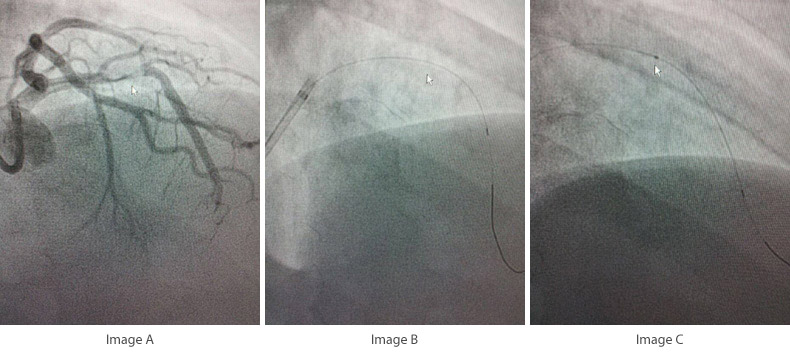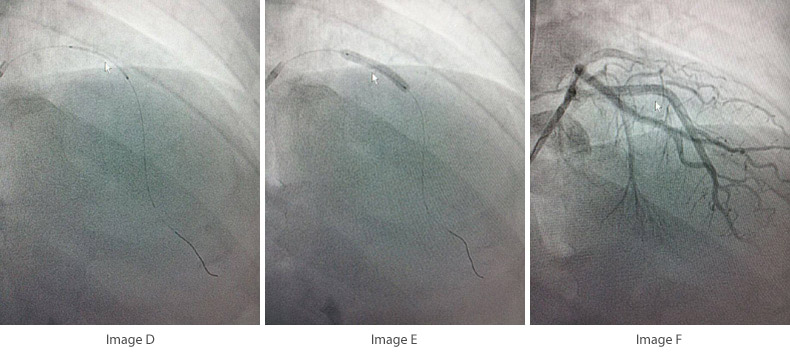Treatments & Procedures
Primary Angioplasty
What does one do when he or she has a sudden heart-attack or an Acute myocardial infarction?
Heart attack or Acute myocardial infarction is a condition where, one of the three arteries which supplies blood to the heart for its pumping function, suddenly gets partially or completely blocked by a clot, thus cutting off the blood supply to the heart muscle. This sudden reduction or stoppage of blood supply to the heart muscle can cause sudden chest pain or breathing difficulty with or without sweating with a sudden drop in the pumping function of the heart and even electrical abnormalities in the heart which can be even fatal.
What is PRIMARY ANGIOPLASTY?
The ideal treatment for heart attacks is, to rush the patient to a hospital and get an angiogram done, followed by an angioplasty. Angioplasty and stenting along with suction of the clots enable complete opening of the blocked artery and thus ensures immediate restoration of the blood supply to the heart muscle and thus preventing death and other complications arising from reduced pumping function of the heart. This form of angioplasty, done in the setting of a sudden heart attack is called PRIMARY ANGIOPLASTY. However, if hospitals with angioplasty facility or expertise are more than 60 to 90 minutes far away and if the performance of angioplasty would be delayed for more than 90 minutes, (described as Door- to Balloon time), it is better to take the patient to the nearest hospital and get medical treatment with injections which can partially dissolve the clots alone (but not the cholesterol blocks) thereby at least partially opening up the artery and restoring some blood supply to the heart muscle. When centers for angioplasty are not available in the 60 to 90 minute vicinity, such preliminary medical care in the nearest hospital, may be life saving. It would suffice that after this preliminary care, that the patient be shifted to a hospital with angioplasty facility and with interventional cardiologists experienced in primary angioplasties.
The steps in a Primary angioplasty are as follows

Image A: This Image shows a 99% or sub-total block of the Left anterior descending artery (LAD) filled with clots (seen as white hazy material), which has caused a sudden heart attack.
Image B: This Image shows a wire placed inside the artery.
Image C: This Image shows a suction catheter (arrow points to tip of the suction catheter) being inserted across the block and as the catheter is pulled out of the artery, it sucks in the clots, by means of a negative pressure given to the catheter by means of a syringe attached to the other end of the catheter.

Image D: This Image shows a stent (which is a cylindrical mesh of alloy or stainless steel) being positioned across the block. (Ballooning may be done if necessary to remove cholesterol blocks, before stent placement)
Image E: This Image shows the stent, which is mounted on a balloon, being deployed across the block, by inflation of the balloon.
ImageF: This Image shows a fully opened artery with brisk and good flow to the otherwise earlier compromised muscle of the heart.
PRIMARY ANGIOPLASTY is life saving and is the procedure of choice. The procedure itself though, carries a small risk of death and other complications, but is lower than the risk from the heart attack itself. Very critical cases may need the back up of temporary pacemaker implantation if the heart beat slows to critically low levels and may need the placement of Intra aortic balloon pumps, if the patient develops cardiogenic shock or very low blood pressures as a part of the heart attack.




